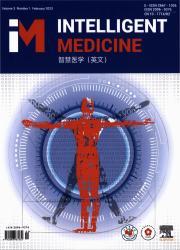Application of multimodal deep learning in the auxiliary diagnosis and treatment of dermatological diseases
IF 6.9
Q1 COMPUTER SCIENCE, INTERDISCIPLINARY APPLICATIONS
引用次数: 0
Abstract
Skin diseases are important factors affecting health and quality of life, especially in rural areas where medical resources are limited. Early and accurate diagnosis can reduce unnecessary health and economic losses. However, traditional visual diagnosis poses a high demand on both doctors’ experience and the examination equipment, and there is a risk of missed diagnosis and misdiagnosis. Recently, advances in artificial intelligence technology, particularly deep learning, have resulted in the use of unimodal computer-aided diagnosis and treatment technologies based on skin images in dermatology. However, due to the small amount of information contained in unimodality, this technology cannot fully demonstrate the advantages of multimodal data in the real-world medical environment. Multimodal data fusion can fully integrate various types of data to help doctors make more accurate clinical decisions. This review aimed to provide a comprehensive overview of multimodal data and deep learning methods that could help dermatologists diagnose and treat skin diseases.
多模态深度学习在皮肤病辅助诊断与治疗中的应用
皮肤病是影响健康和生活质量的重要因素,特别是在医疗资源有限的农村地区。早期和准确的诊断可以减少不必要的健康和经济损失。然而,传统的视觉诊断对医生的经验和检查设备的要求都很高,存在漏诊和误诊的风险。最近,人工智能技术的进步,特别是深度学习,已经导致在皮肤病学中使用基于皮肤图像的单模计算机辅助诊断和治疗技术。然而,由于单模态所包含的信息量较少,该技术无法在现实医疗环境中充分体现多模态数据的优势。多模式数据融合可以充分整合各类数据,帮助医生做出更准确的临床决策。本综述旨在提供多模态数据和深度学习方法的全面概述,这些方法可以帮助皮肤科医生诊断和治疗皮肤病。
本文章由计算机程序翻译,如有差异,请以英文原文为准。
求助全文
约1分钟内获得全文
求助全文
来源期刊

Intelligent medicine
Surgery, Radiology and Imaging, Artificial Intelligence, Biomedical Engineering
CiteScore
5.20
自引率
0.00%
发文量
19
 求助内容:
求助内容: 应助结果提醒方式:
应助结果提醒方式:


